Armored Core 6: Fires of Rubicon
Written by - Livid
Updated: September 9, 2023
|
Posted: August 24, 2023

Thank you to FromSoft and Bandai Namco for providing us with an early review copy for Armored Core 6.
What Is Armored Core 6?
For those completely new to the AC franchise, Armored Core 6 is likely a different experience than you might be expecting. For veterans, it’s likely exactly what you’re expecting, and dare I say, the perfect iteration of the game to date. Still, it’s important to quickly talk about what this game is for all the new eyes on this series after a long, 10+ year hiatus.
Armored Core 6 is a story driven, mission based mech action game, where much of the story and dialogue is fed to you over in-game communications, and out of mission comm screens similar to that of Metal Gear Solid. There are various cinematics, but a significant portion of the story experience comes from those comms screens, supplemented by in-game data log collectibles, and mission briefing screens.
There is an extremely large emphasis on mech customization, as any veteran AC player might expect, which allows you to explore a whole variety of playstyles from light and agile, glass canon type builds, all the way to hulking, tank based platforms armed to the teeth with heavy weapons.
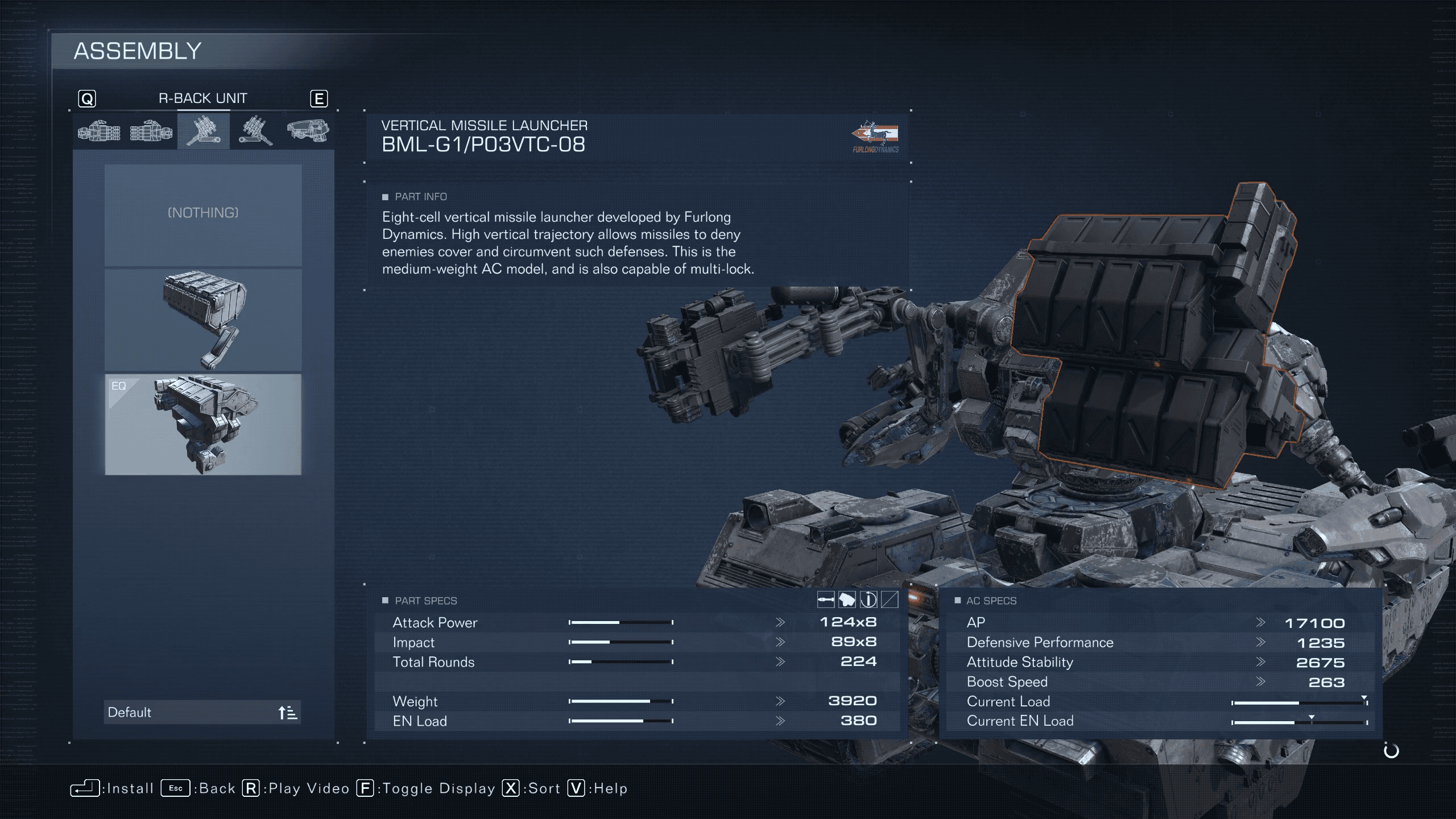
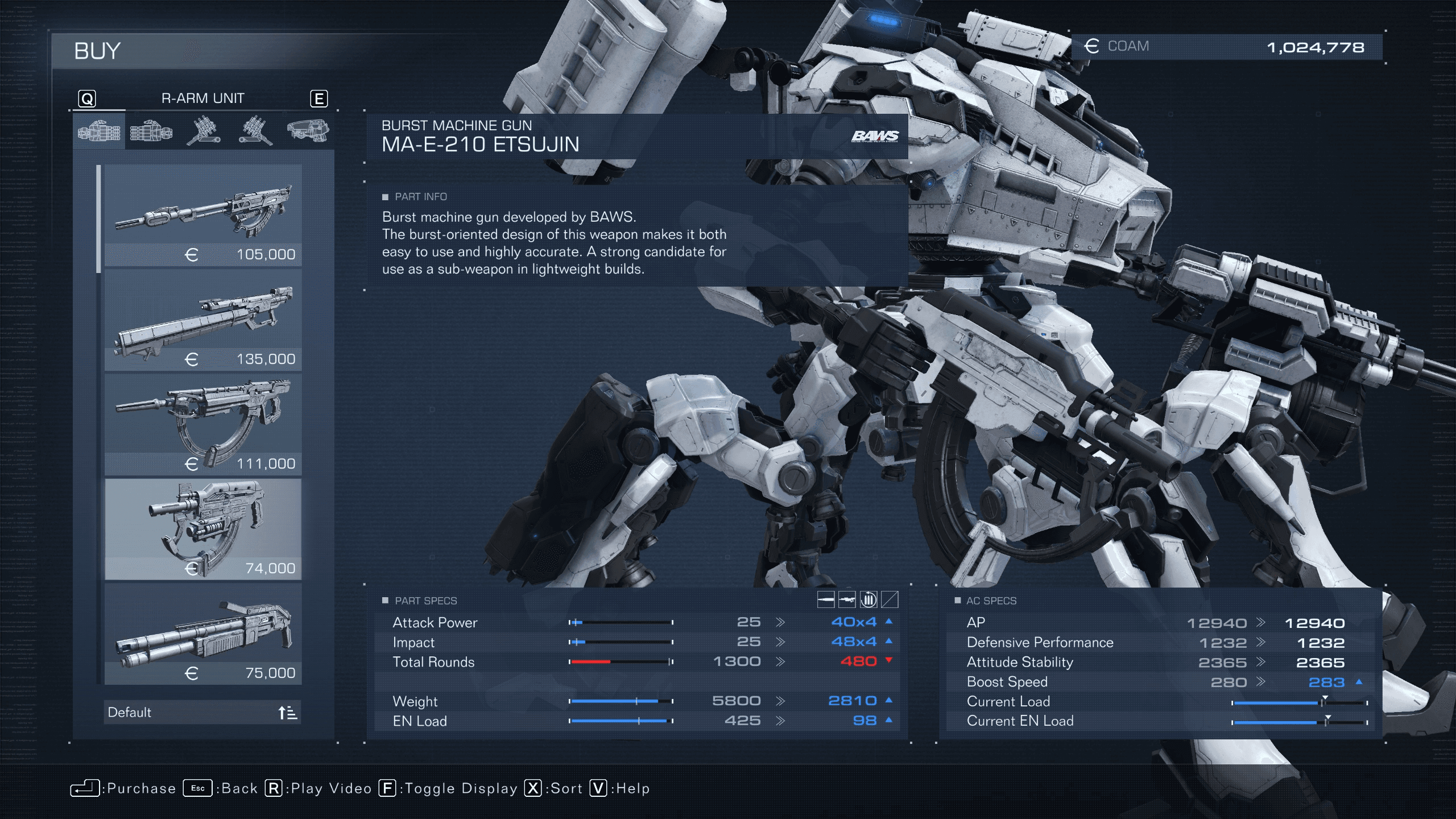
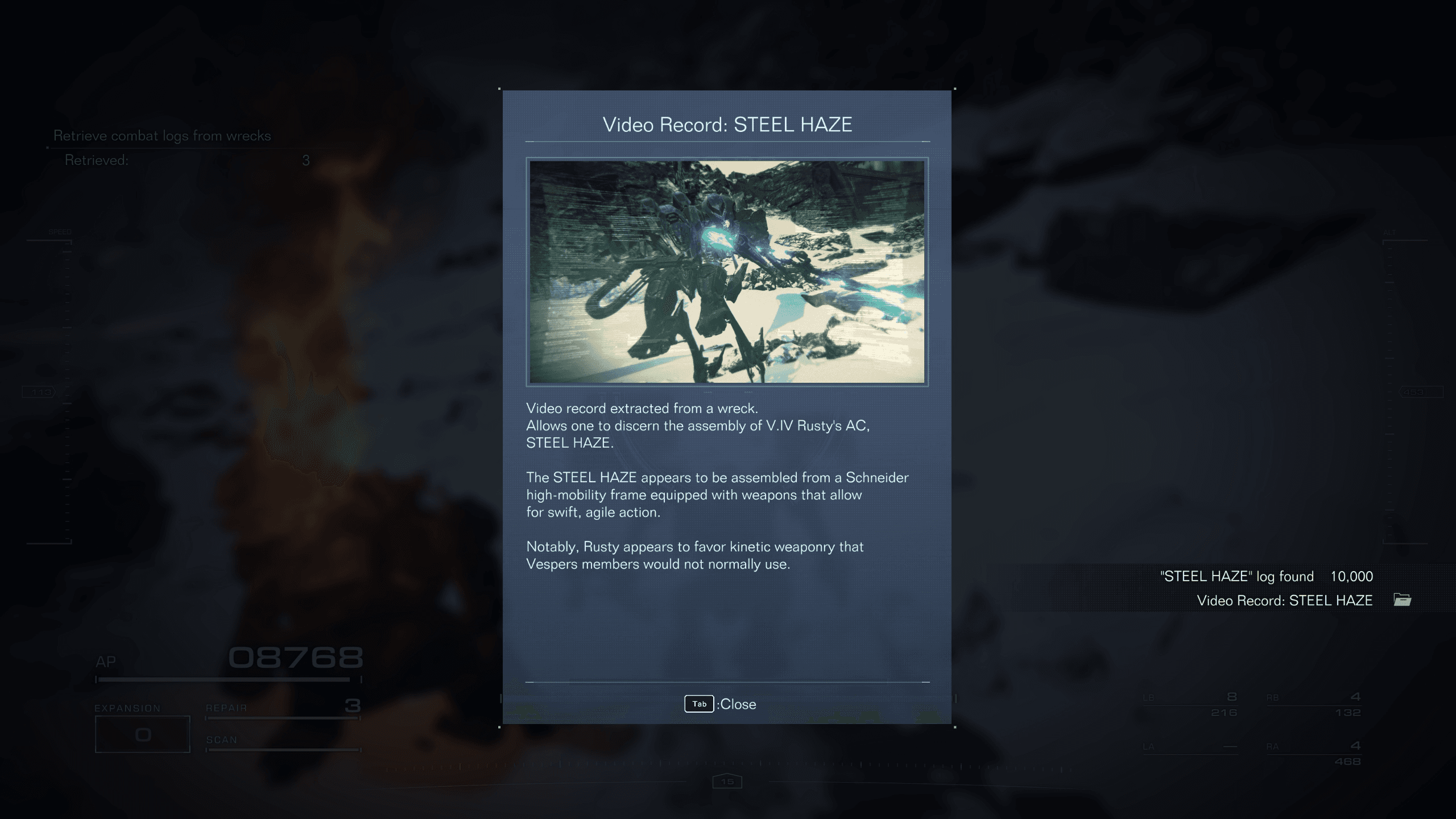
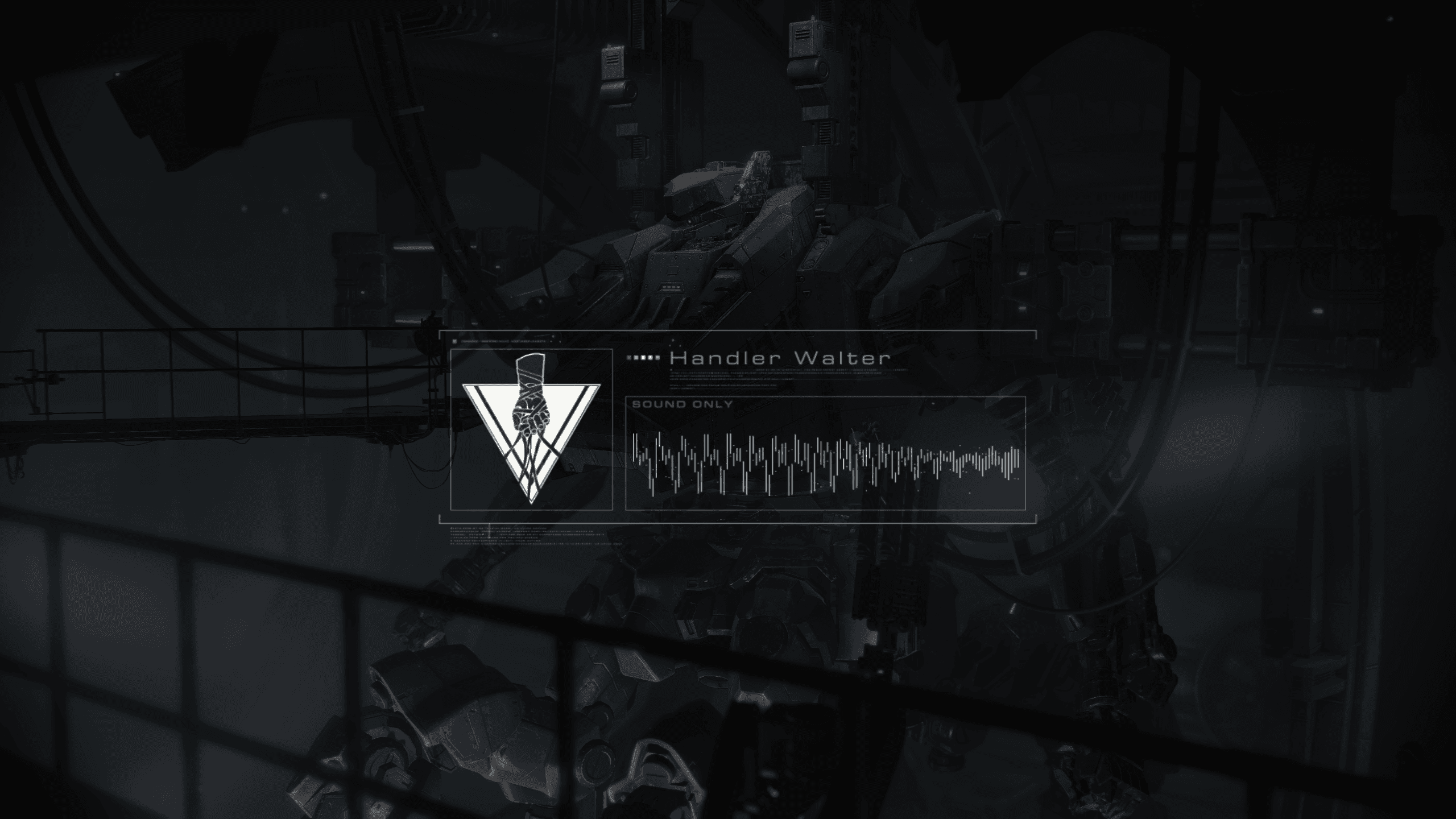
You play as a single character piloting an Armored Core, a class of highly customizable and technologically advanced mechs, controlled by a Handler that assigns you various mercenary missions, and has you jump between both mercenary groups and factions as you complete missions for them, earning credits, reputation, and new mech parts.
This is not a souls-like game, contrary to what a lot of uninformed journalists and creators out there will otherwise suggest. It does, however, build on FromSoft’s decade of dedication to their souls series that occupied the time between Armored Core 5 and now 6, using the lessons they’ve learned along the way in encounter design, boss fights, and more, to go back to their roots and bring a beloved franchise into the modern age of gaming.
The only things Armored Core 6 and Dark Souls truly have in common is deep and rewarding level of customization, boss encounters that are well designed and challenging, and level design that is precisely tuned to be approachable with different playstyles. That’s where the similarities end and will be the last time in this review you hear the phrase “souls-like” mentioned. Those core similarities aren’t that big of a leap for those who are already familiar with the Armored Core series. It’s just good game design, not something beholden to another series.
Story and Missions
Armored Core 6 begins in the atmosphere above Rubicon, a planet that is home to a rare and dangerous mineral, Coral. The planet and native population have been all but decimated as various mining colonies and corporations employ private military groups and mercenaries to compete for acquisition, refinement, and export of this dangerous, yet powerful mineral.
We won’t go into what your ultimate role is in all of this but know there are various directions that the story can go, with missions leading you down different narrative threads.
You’ll customize your AC, test it out in training missions and virtual simulations, then begin mission deployment. There you’ll receive a small briefing, a deployment cutscene that sadly never changes camera angles, a brief loading screen, before finally being dumped into the mission, combat systems armed and ready. Complete that mission and your handler will bring you home, reward you with some credits, sometimes parts, debrief via some narrative messages, rinse and repeat.
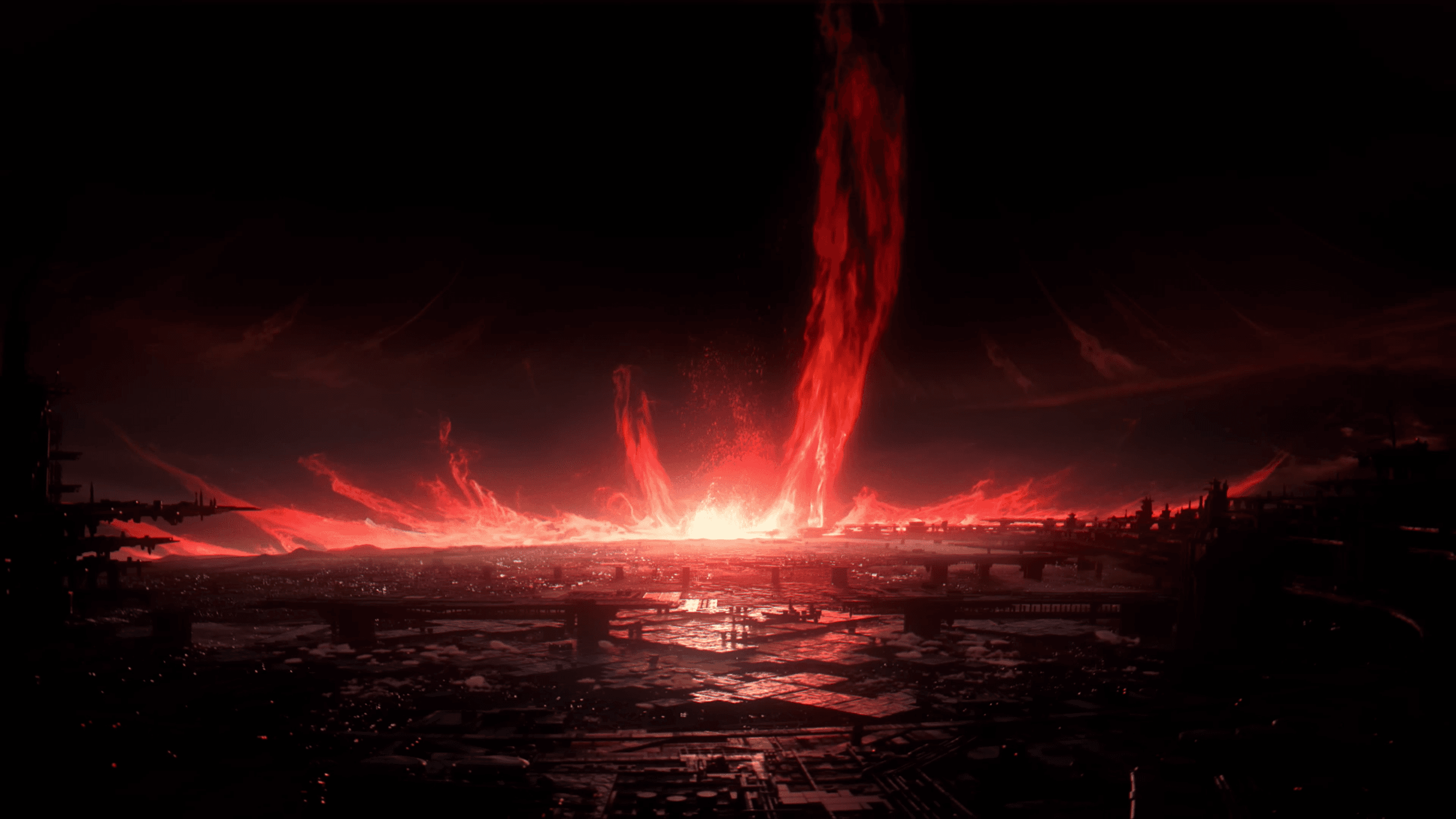

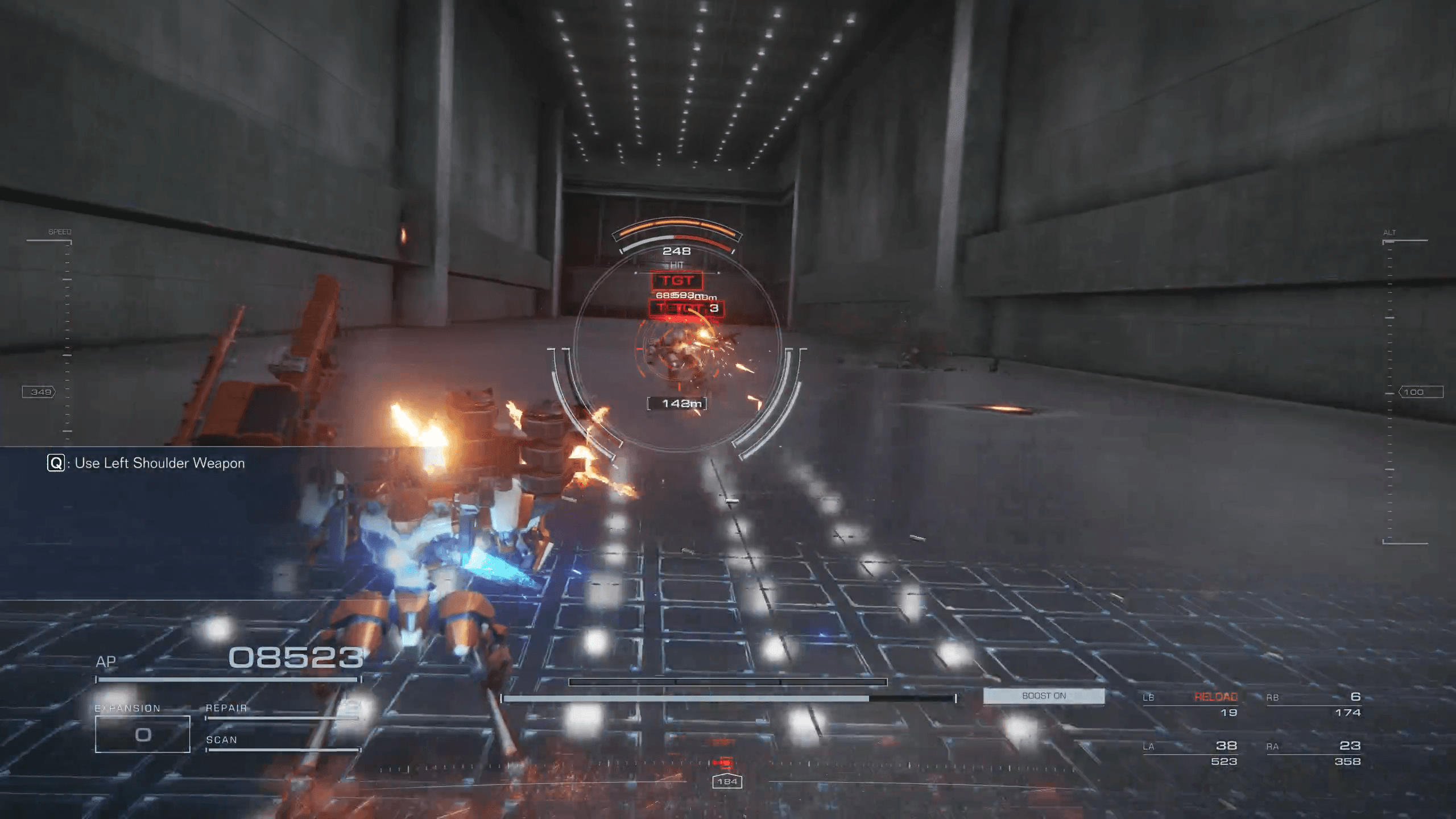
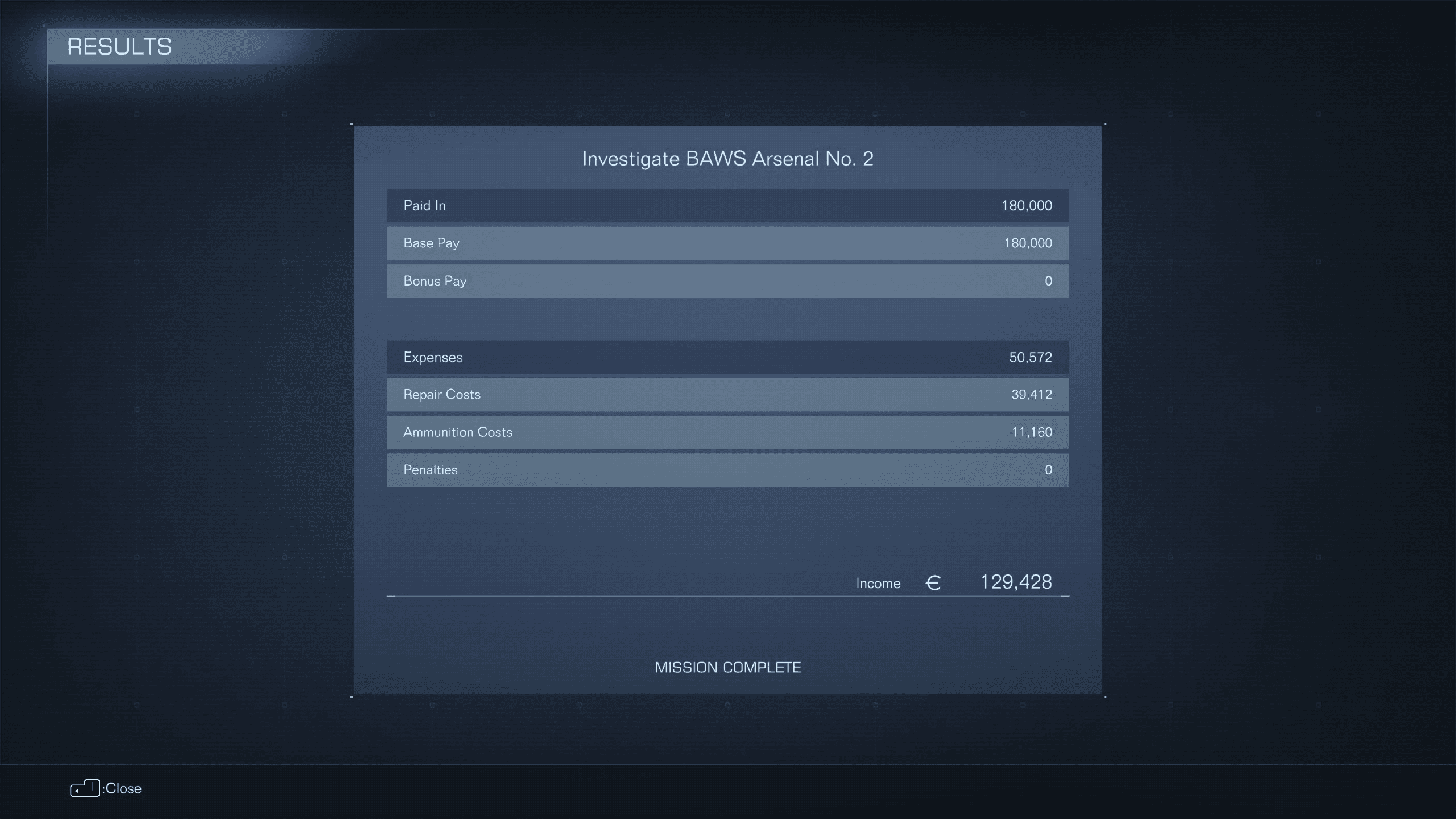
This isn’t an open world experience, and if you’re familiar with previous AC titles or even games like Ace Combat, the formula plays out very much the same and that hasn’t changed from past games. Frankly, we don’t think it needs to, it works just fine with this genre.
Missions in Armored Core 6 are best described as an action combat puzzle. Verticality is a central design pillar of AC6, and often you’ll find yourself needing to find the best way to get from A to B while clearing massive gaps, climbing huge structures, all the while, dodging incoming fire from deliberately placed artillery emplacements and mobile enemy units. If you try to just brute force your way through any of these missions, you’re going to end up dead, plain and simple. Instead, understanding sight lines, using low ground for cover and taking high ground to rain down hell on entrenched enemies will be the key to success. Weapon cooldowns, ammo reserves, and even managing your boost are integral to you navigating each and every tricky situation or risk being dumped back at the main menu.
The game can be extremely challenging in places, while easy in others, and since there is no difficulty option within the game you’re locked in, fighting through each obstacle as they were intended. Luckily, and quite intentionally, the game features a nauseating amount of loadout slots allowing you to customize and save builds to your heart’s content. You can then swap to one that might work better in a specific circumstance if you’re getting dumpstered, giving you quick flexibility in a situation that might otherwise be frustrating, and that’s a huge win in our book.
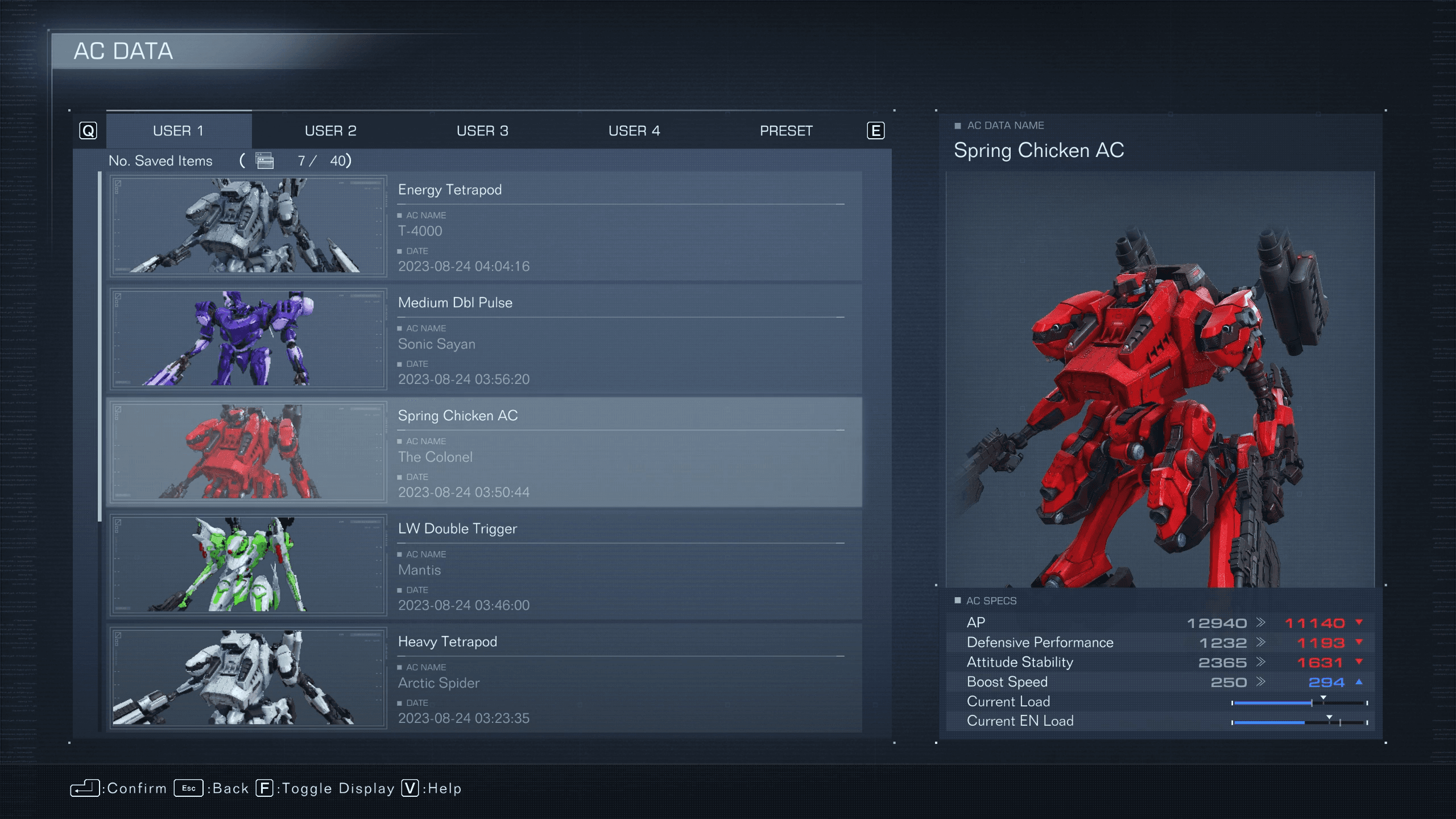
These quality-of-life features let you focus on the mission at hand rather than constantly rebuilding your AC, and in Armored Core 6, there are some truly incredible missions. Even from the start, you’ll find yourself working your way through a ruined and flooded city, taking out artillery emplacements, and climbing up massive structures before facing off against a hilariously oversized Helicopter platform shooting missiles out of who knows where.
Fast forward and you’ll find yourself assaulting an imposing wall bristling with defenses as you jump and climb to the top and face off against a heavily armored artillery platform that wants nothing more than to smash you into pieces.
There’s even a mission early on where you need to take down a hulking, weaponized mining rig. You have to dodge devastating laser blasts, missile barrages, and various ground units before getting close enough to cripple a leg and halt its movement. You’ll then ascend up its body, destroying numerous weapon emplacements, destroying power relays, finally facing off against a giant eye weapon, responsible for the laser show. Seriously, it’s an incredible mission design.
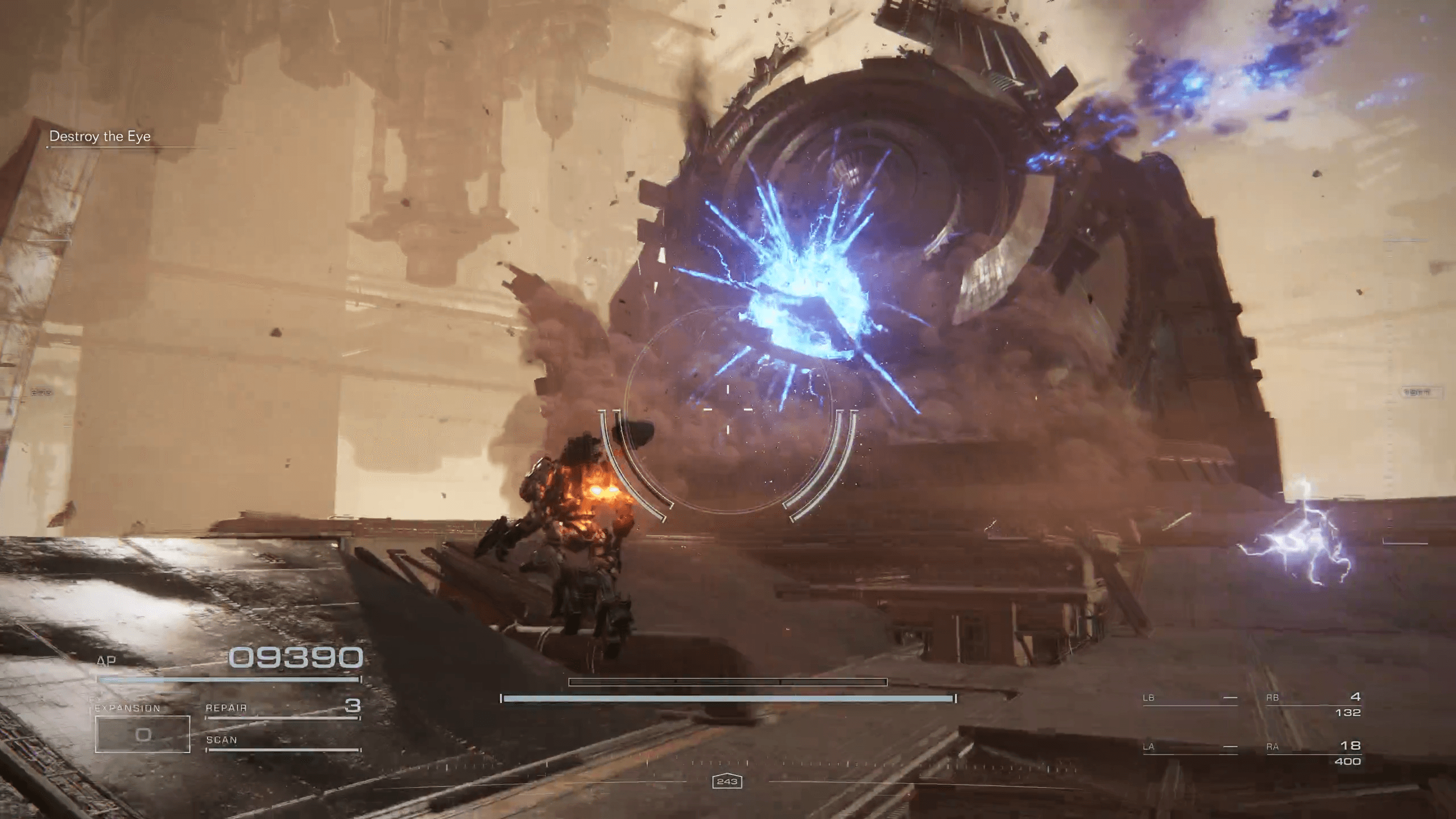
Then throw in the random missions like one inside a single room in a factory where you kill a handful of low-level enemies that take maybe a minute to complete before the mission is over and you find yourself thinking “Wait why was this a mission?”. For veterans of the series, you’ll remember, oh yeah, “I’m a mercenary for hire and this is more of an ‘I’m doing this for the paycheck’ type of mission”. It’s meant to be immersive, supplement your credit income, and break up the pacing between the other longer, sometimes grueling missions, but it did feel a bit lacking.
Visuals
Mechanically and visually, this is distinctly an Armored Core game through and through. Even though this is a FromSoft title, a studio known for not only it’s incredible gameplay and system design, but also for its breathtaking environmental visuals, the latter will feel, to many in the general player base, a bit bland. Everything from start to finish, feels devoid of beauty overridden by the cold and imposing structures of corporations that have ravaged and pillaged the natural splendor of the world.
Don’t get me wrong, the giant structures in the sky, massive suspended factories, and so on are all still breathtaking to look at as an Armored Core fan, and whether you are outside in the icy tundras, traversing the flooded cityscapes, or working your way through a factory complex that makes even your own AC seem small, but everything is tonally the same. Does it look vastly better than all previous AC games? Most definitely, but after a while it does because a drab blur.
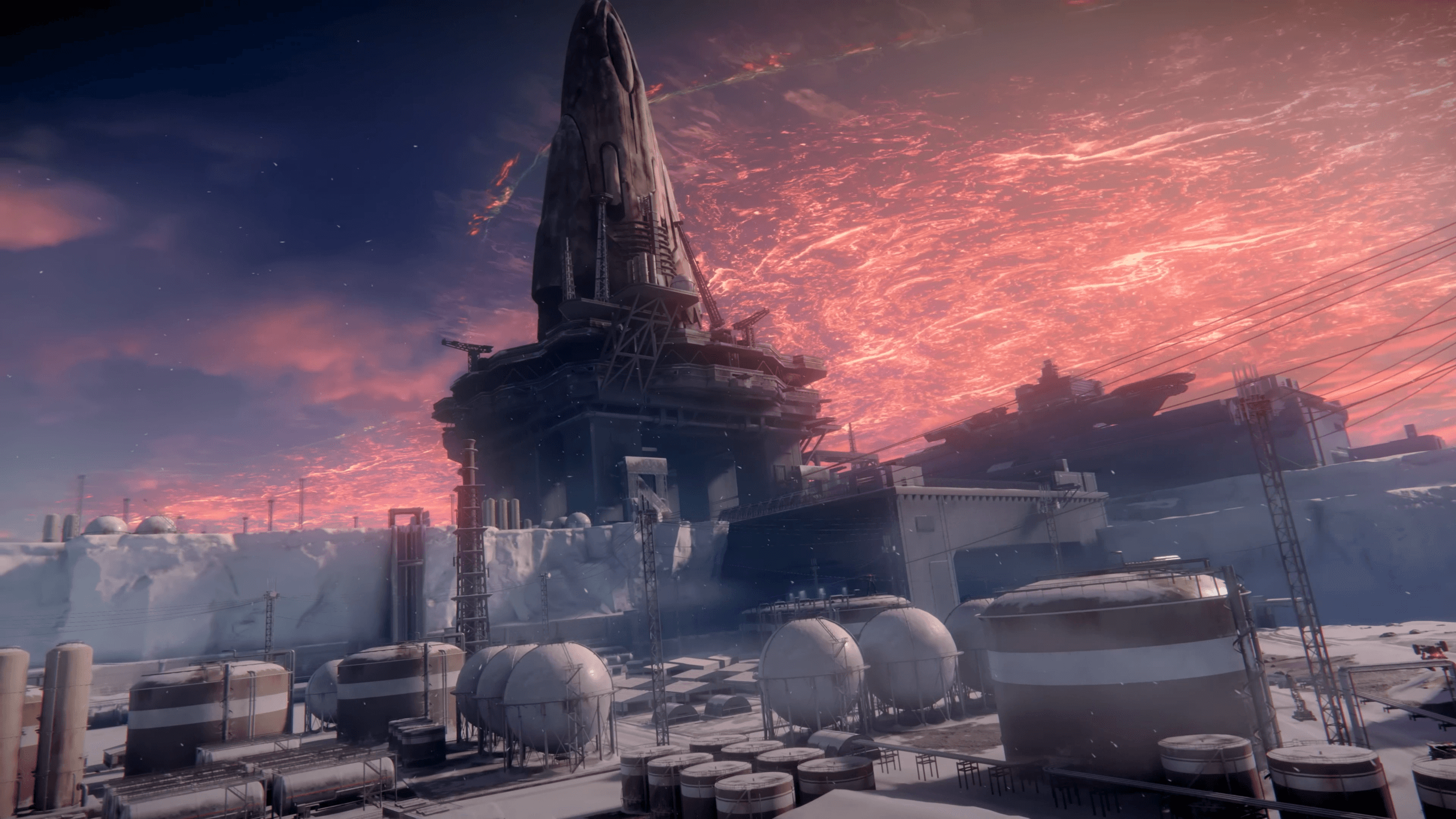
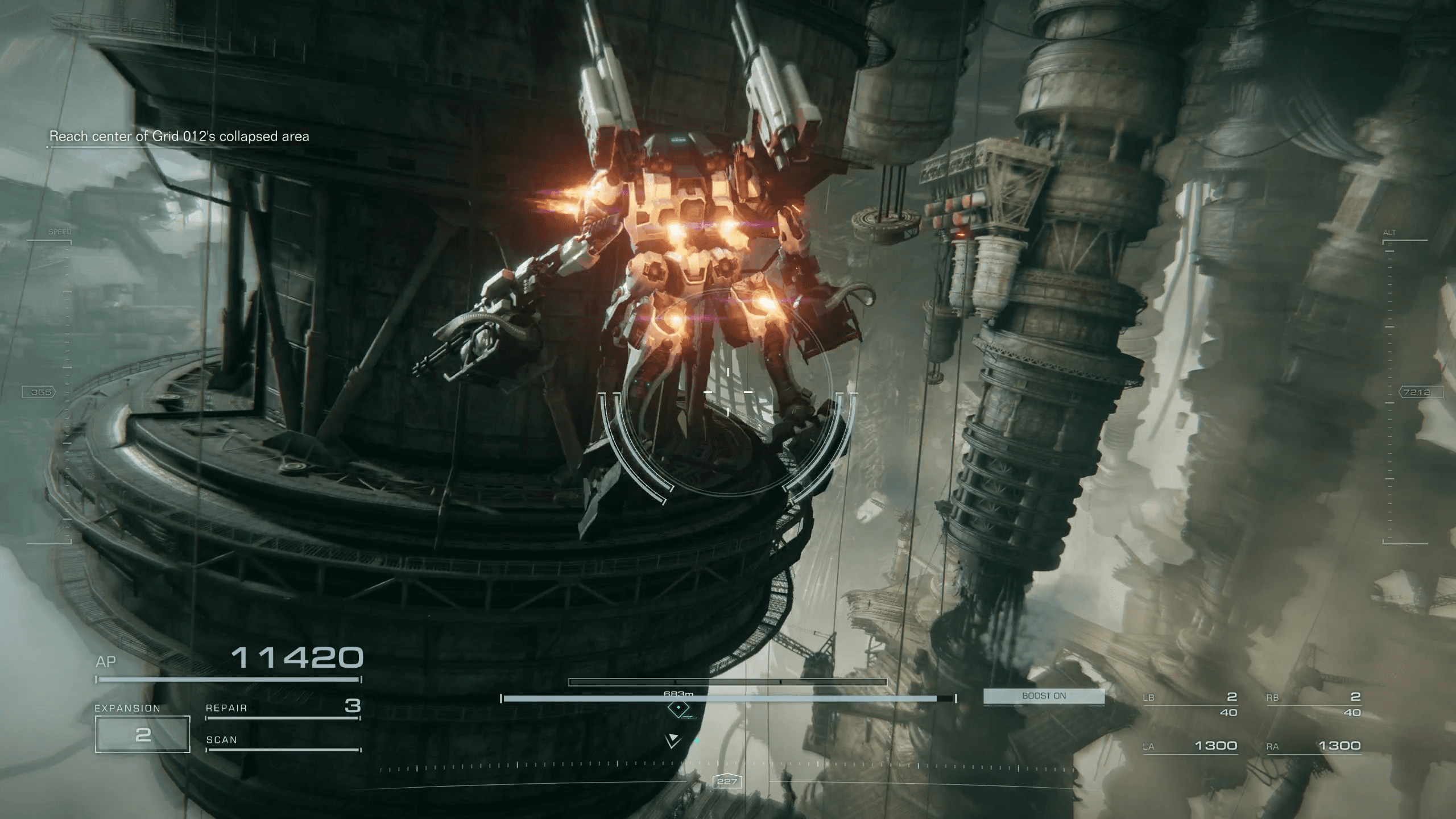
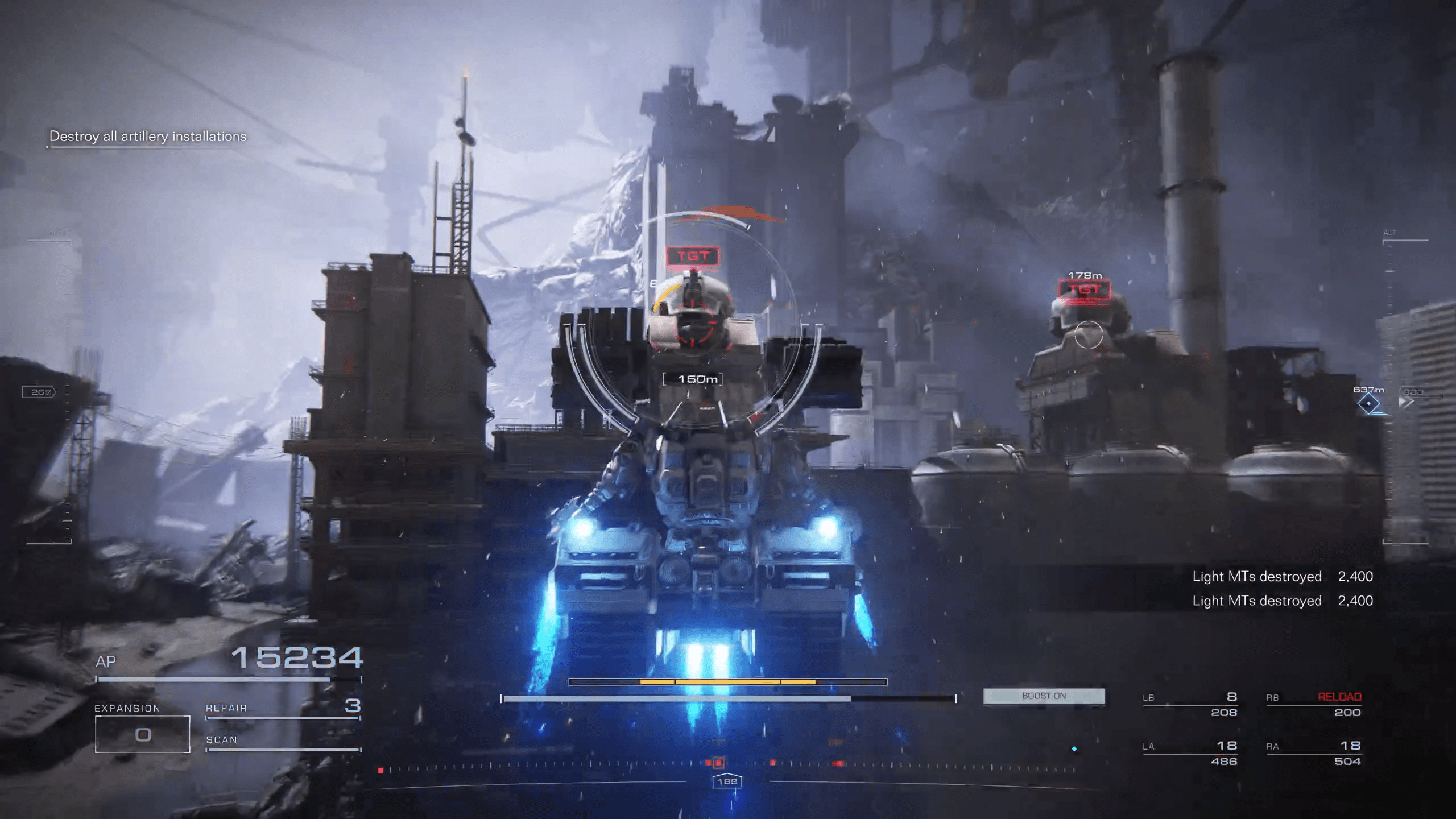
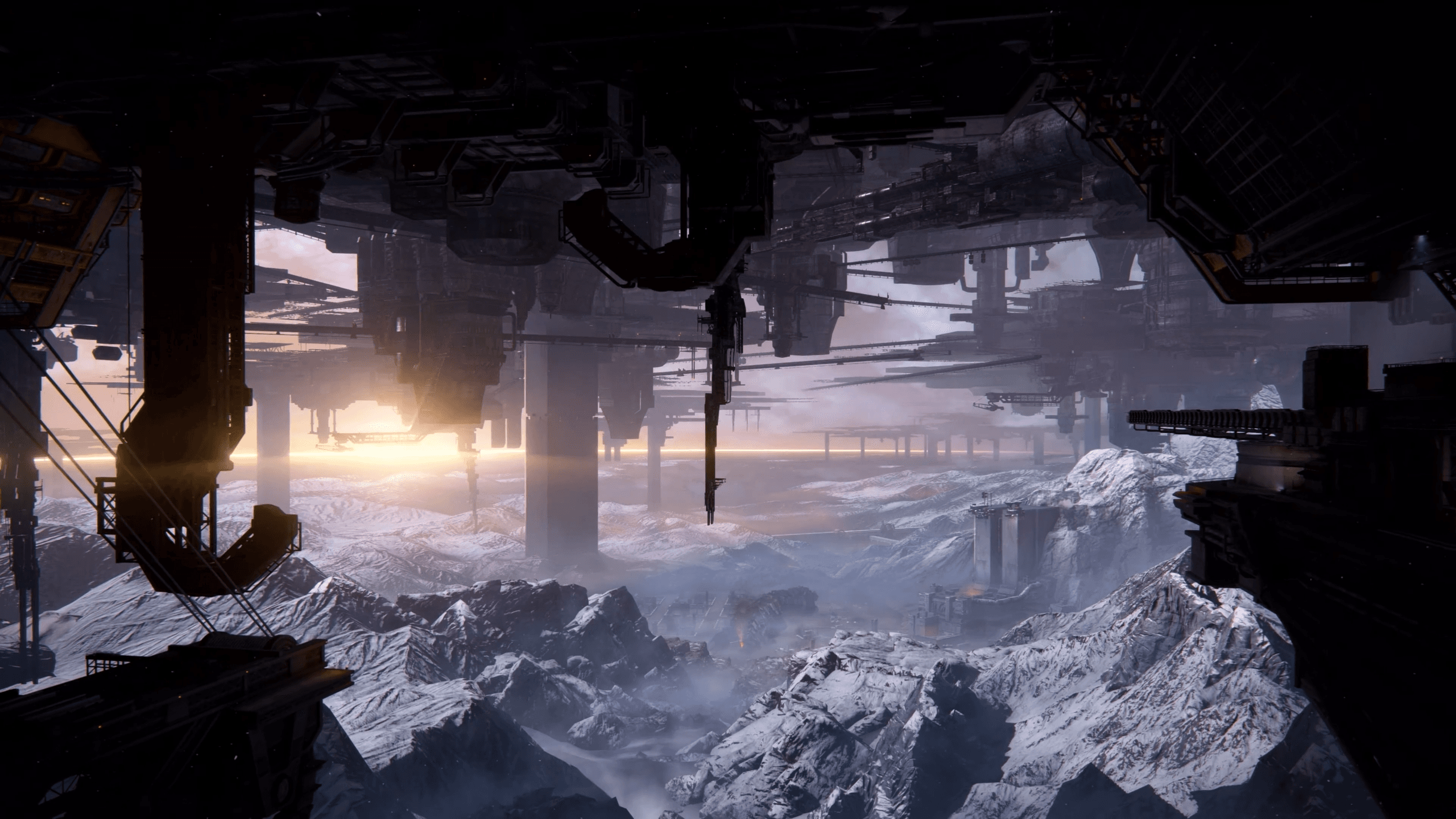
For the general population of players who are too concerned with hyper realistic graphics being the defining factor of a next gen title, they’ll as usual, will be disappointed, and that’s fine. Graphics don’t make a good game, plain and simple. The game doesn’t push for heavy graphical fidelity, and as a reward for not doing so, the game delivers on performance, never once experiencing a single graphical or performance hit during over 30 hours of combat encounters. For those that love the stark, brutalist, industrial and deserted landscape style that is so integral to the Armored Core experience, it’s very much firing on all cylinders this time around.
Progression
Progression starts out incredibly slow and is more about getting you acquainted with all the gameplay systems and decision making you’ll need to employ as you progress further in the game. That being said, combat and encounters significantly pick up the further you get into the Storyline, and It’s important to note, you don’t ever “level up” or really do much in the way of upgrading skills, weapons, armor, or really anything. It’s all about unlocking or purchasing that next piece of gear that synergizes with the playstyle and stats you’ve decided on.
Veterans of the AC and Souls franchises will likely feel right at home here, with boss fights and even elite enemy density increasing the further you get in the game, requiring you to continuously evolve your approach to new and challenging encounters.
Casual players will almost certainly hit a wall when it comes to some of the game’s bosses. I consider myself a veteran of mech games and still spent over an hour beating my head into a wall over the Balteus fight. He kept trying variations on a loadout until something finally clicked and the boss fell over. It was a hard won fight and I think that’ll be the experience for most players across the board.
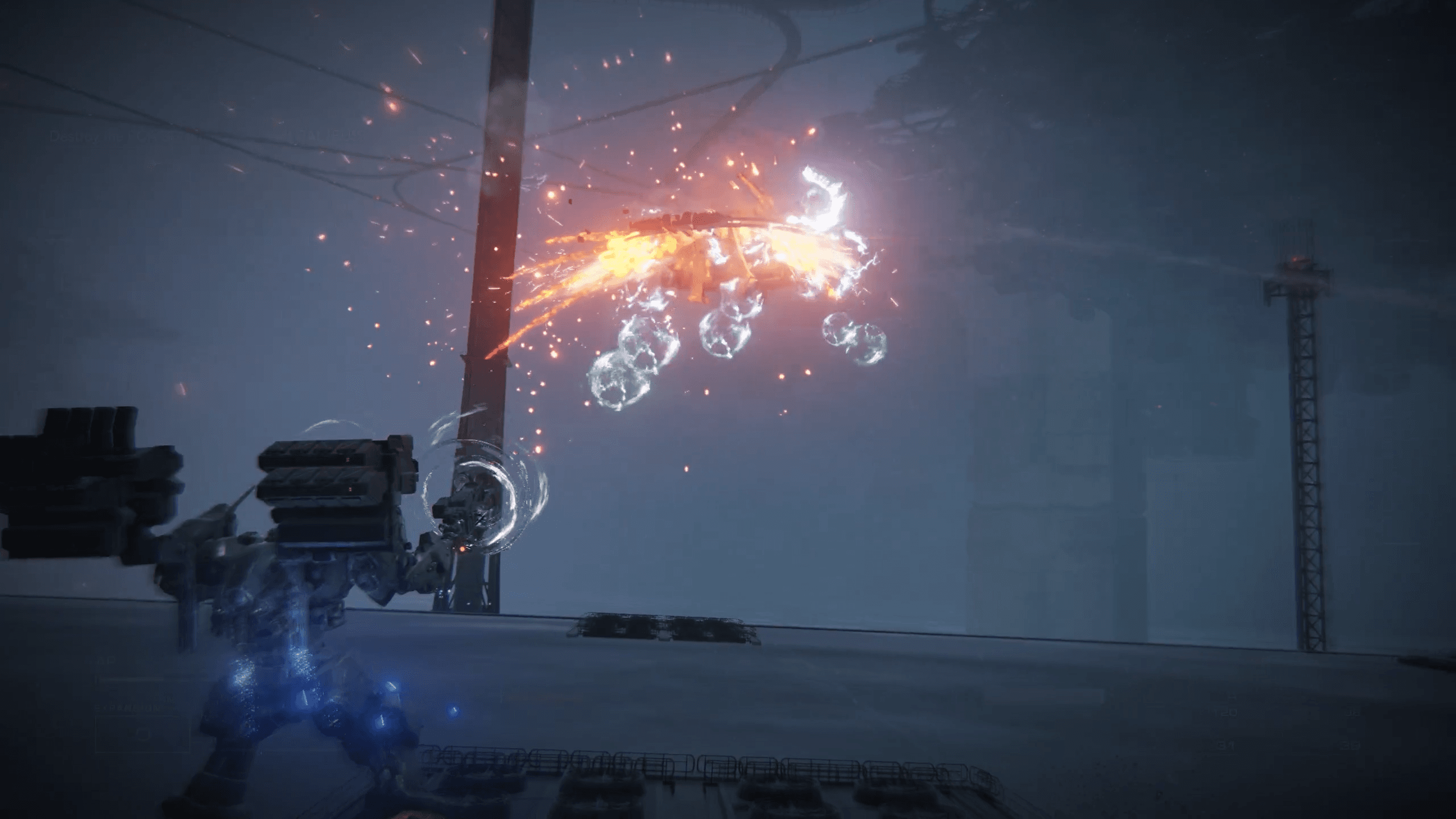
And I don’t want to scare any casual players out there. AC6 is challenging but it’s also insanely approachable for those who have never played a game from the series. There are a number of features that will guide and aid you as you’re adjusting to the learning curve.,
The Training Module will quite literally teach you everything you need to know about the game, even down to how each Armored Core weight class plays and functions.
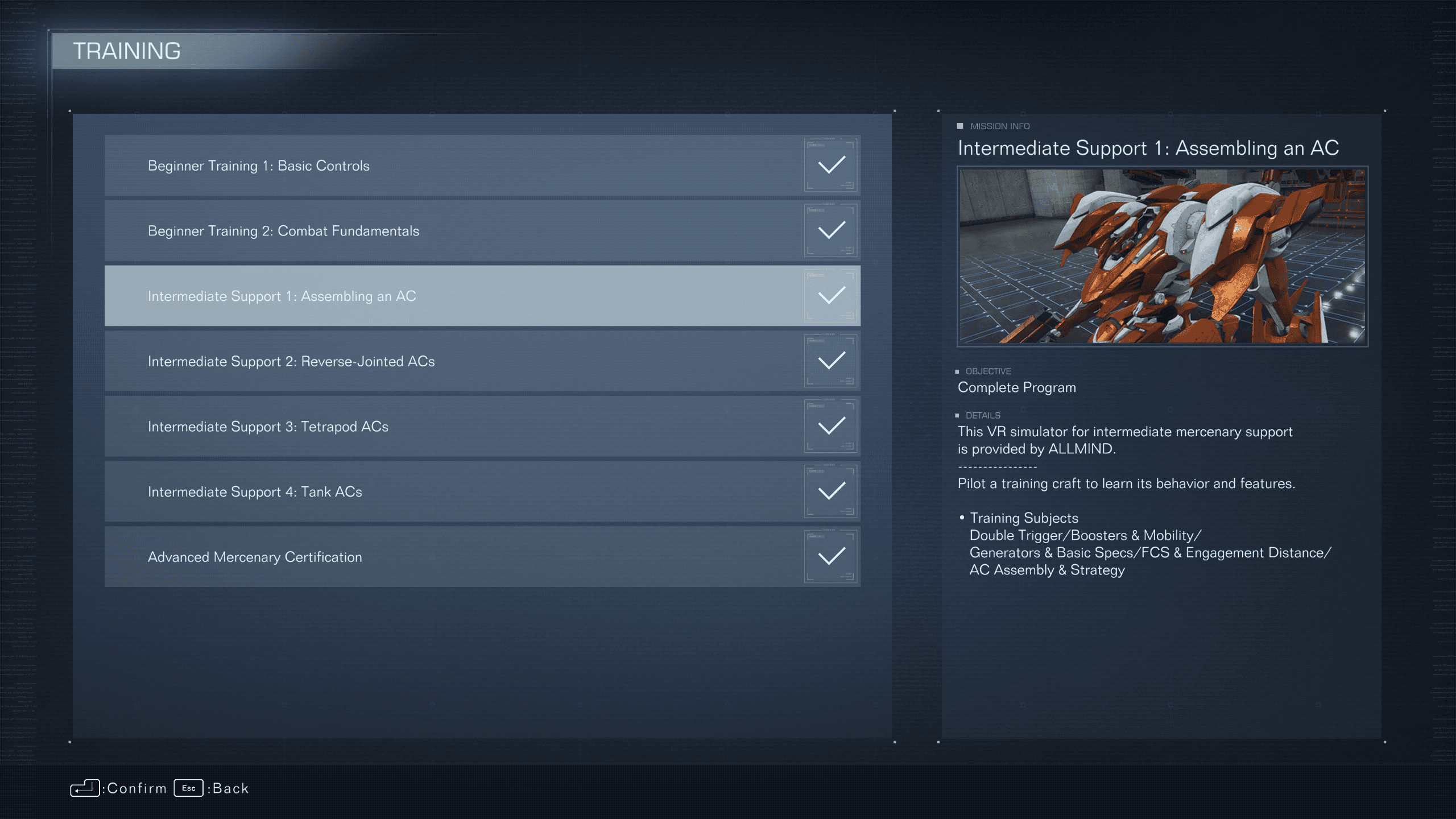
The Arena returns facing you off against various named ACs, all with their own cheeky backstories just like previous entries in the series. The coolest thing however is that these fights not only let you hone your combat abilities, but also reward credits and OST Chips, which allows you to enter the OS Tuning menu. Here you’ll upgrade core functionality of your AC, like more kinetic or explosive damage, new abilities like being able to kick an enemy out of an assault boost, and even repair kit effectiveness, an essential upgrade as your health pool gets larger and encounters get more difficult. It’s essentially a passive skill tree, but also not. It’s the only secondary investment system outside of straight up buying new parts.
To cap things off on the accessibility front, FromSoft even adds optional contextual menus that you can activate to explain what every single stat on your Assembly screen means. Stats are a massive part of the game, and achieving the right balance of stats for your specific AC’s playstyle is crucial. This not only helps veterans, but massively opens up the game to a more casual and fresh audience.
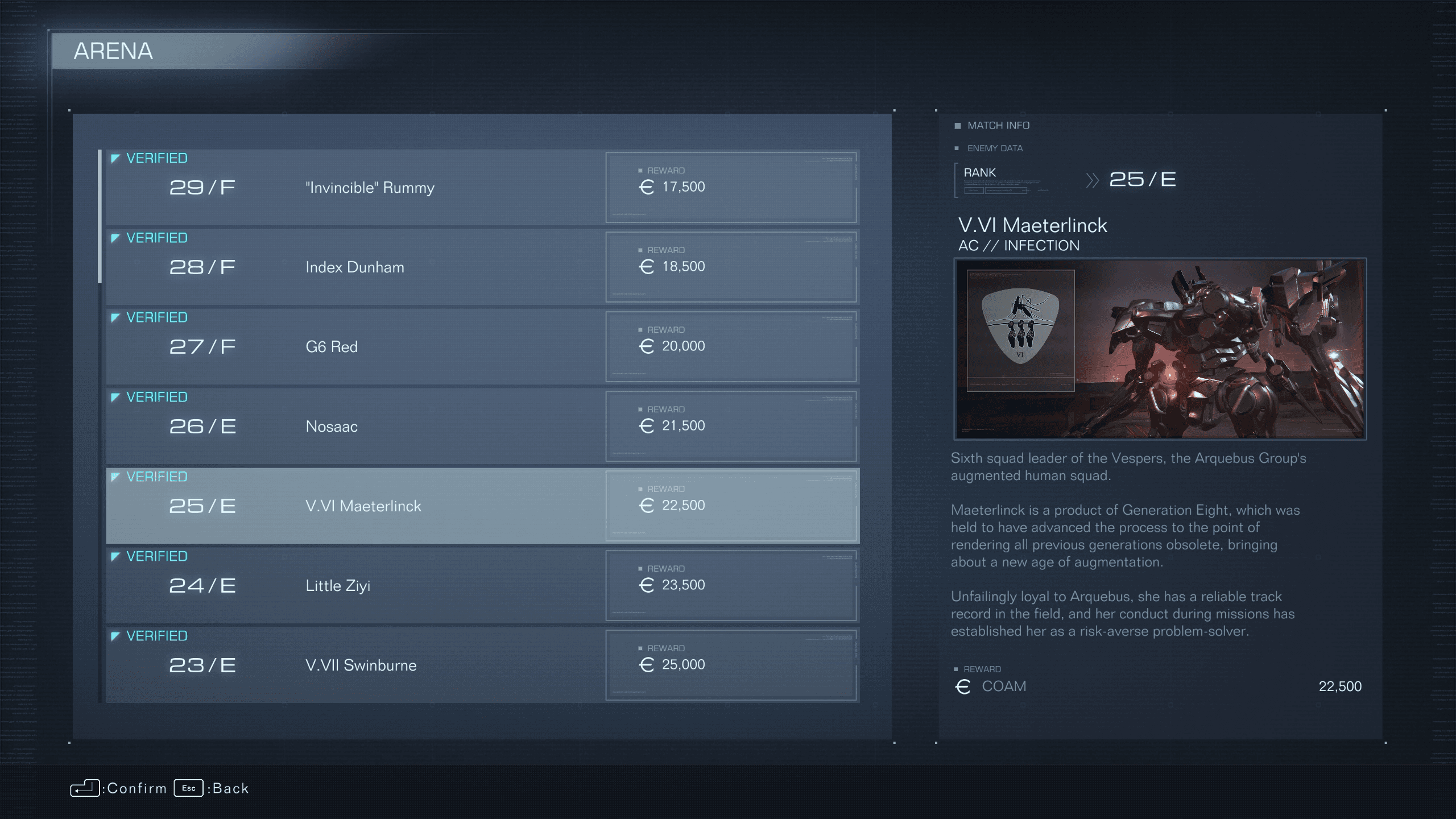
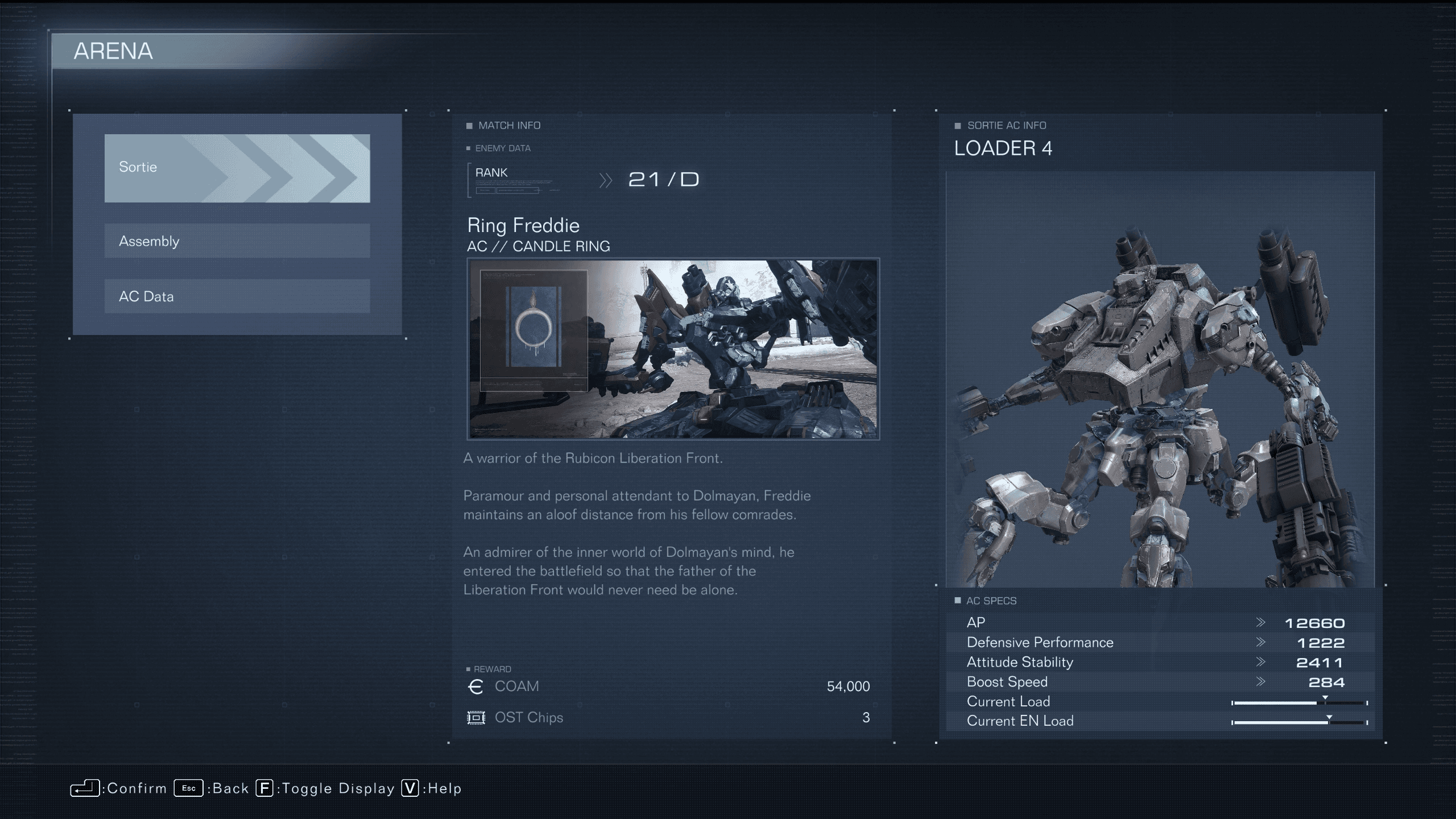
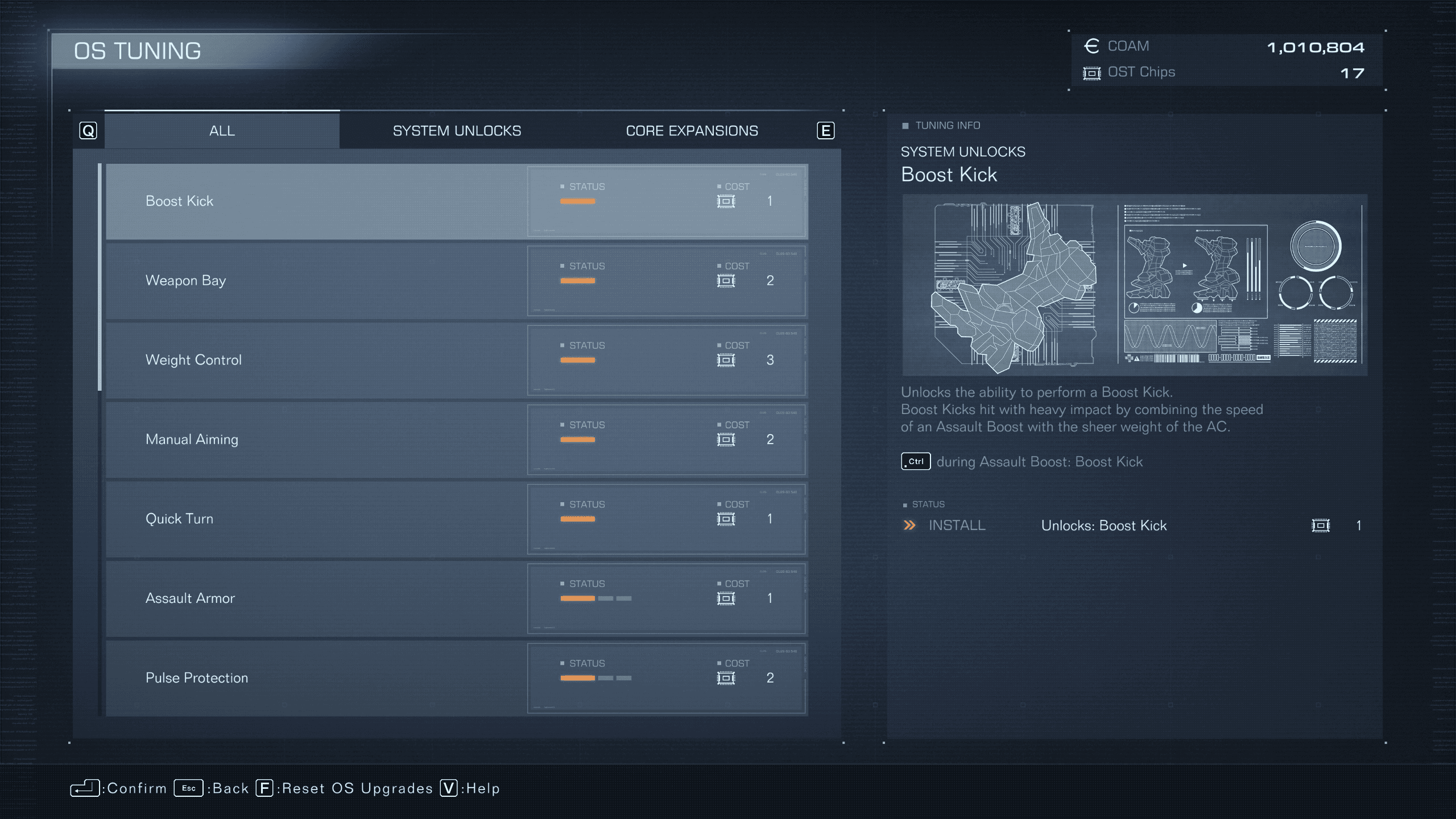
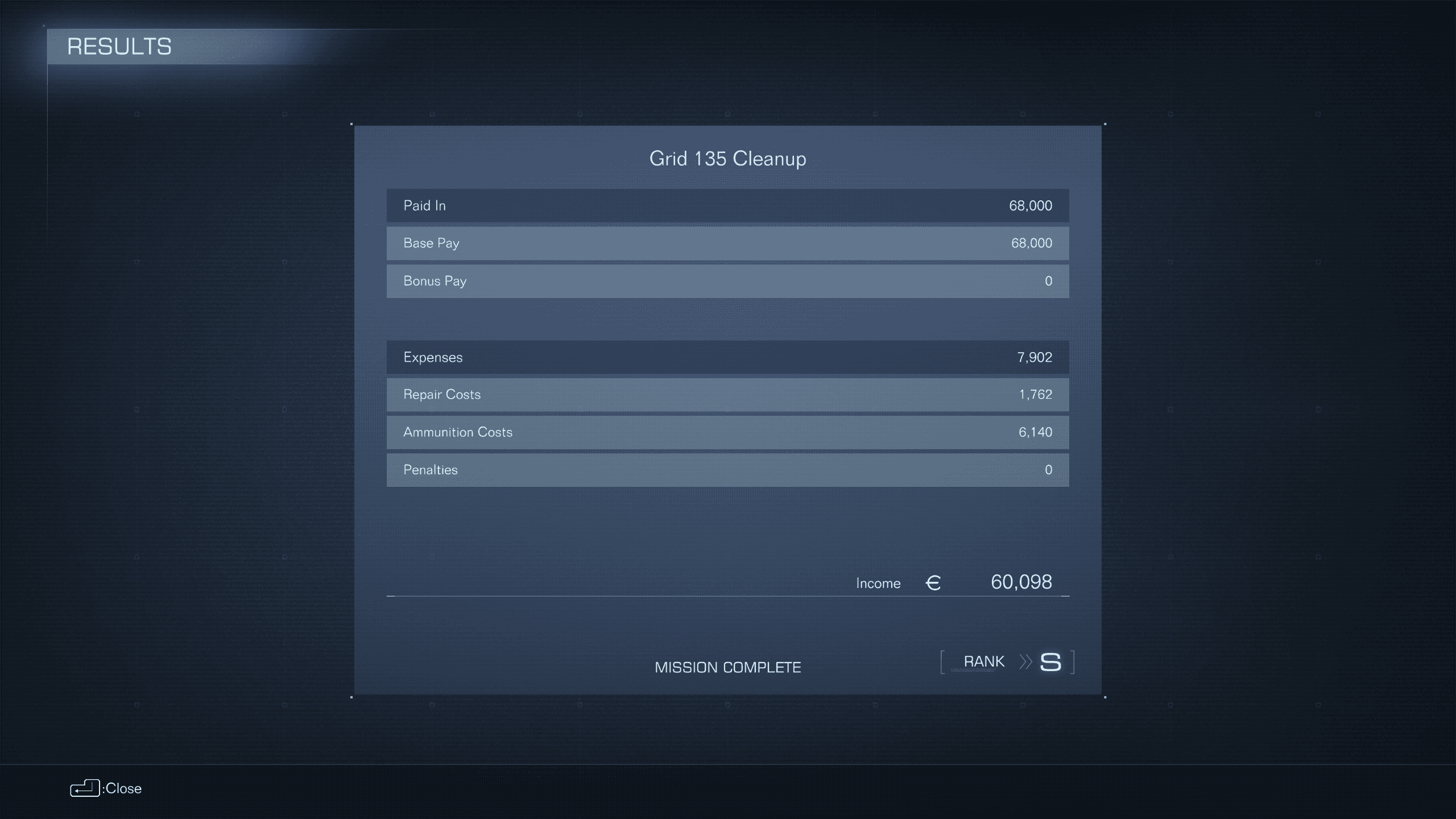
With all of this in mind, when it comes to an AC title, the true difficulty test comes in when you are replaying levels and trying to archive S-Ranks. These can reward you sometimes even with hidden parts and much more credits, allowing you to progress more efficiently. It’s a staple in the franchise. Even though enemies aren’t likely going to kill you, every bullet, missile salvo, or explosion can cost you rank in repairs, and every misplaced shot will cost you ammo. Fighting efficiently becomes a much more difficult endeavor.
This and PvP are basically what you are looking at in terms of endgame content.
Assembly and Combat
There are two parts to mastering an Armored Core game. The first part is Assembly. This is where you will spend a significant amount of time customizing your Armored Core.
Every time you complete a story chapter, you’ll open up a whole new array of weapons, AC pieces, and subcomponents for purchase. You’ll also receive a healthy number of parts by interacting with the Loghunt system, which basically rewards you with a point every time you defeat a boss or enemy AC. Get enough points to fill up the meter, and you’ll be rewarded with a new part.
Every AC has 2 primary weapon slots, one on each arm, as well as 2 shoulder mounted weapon slots. You’ll have access to devastating melee weapons like laser blades and Impact Spikes that chew through enemies if you can catch an enemy off guard and land the attack. Then there are a whole host of basic weaponry like Assault Rifles, Pulse Rifles, Beam weapons, and various degrees of explosive ordnance. The amount of options by the end of the campaign are just simply staggering.
You’re also able to customize your head, core, arms, and arguably the most influential component, your legs, which have a sizable and direct impact on the maximum weight load your AC can sustain.
If you have light legs, you’ll be more agile but be able to support far less devastating weapon platforms. Conversely, if you toss on something like the Tetrapod style legs or Tank Treads, you’ll not only be able to hold more heavy weaponry, but also gain the ability to often override weapons that require you to stand in place to fire. Of course, this all comes with the tradeoff of speed and maneuverability, but the sheer variety here is nothing short of exciting.
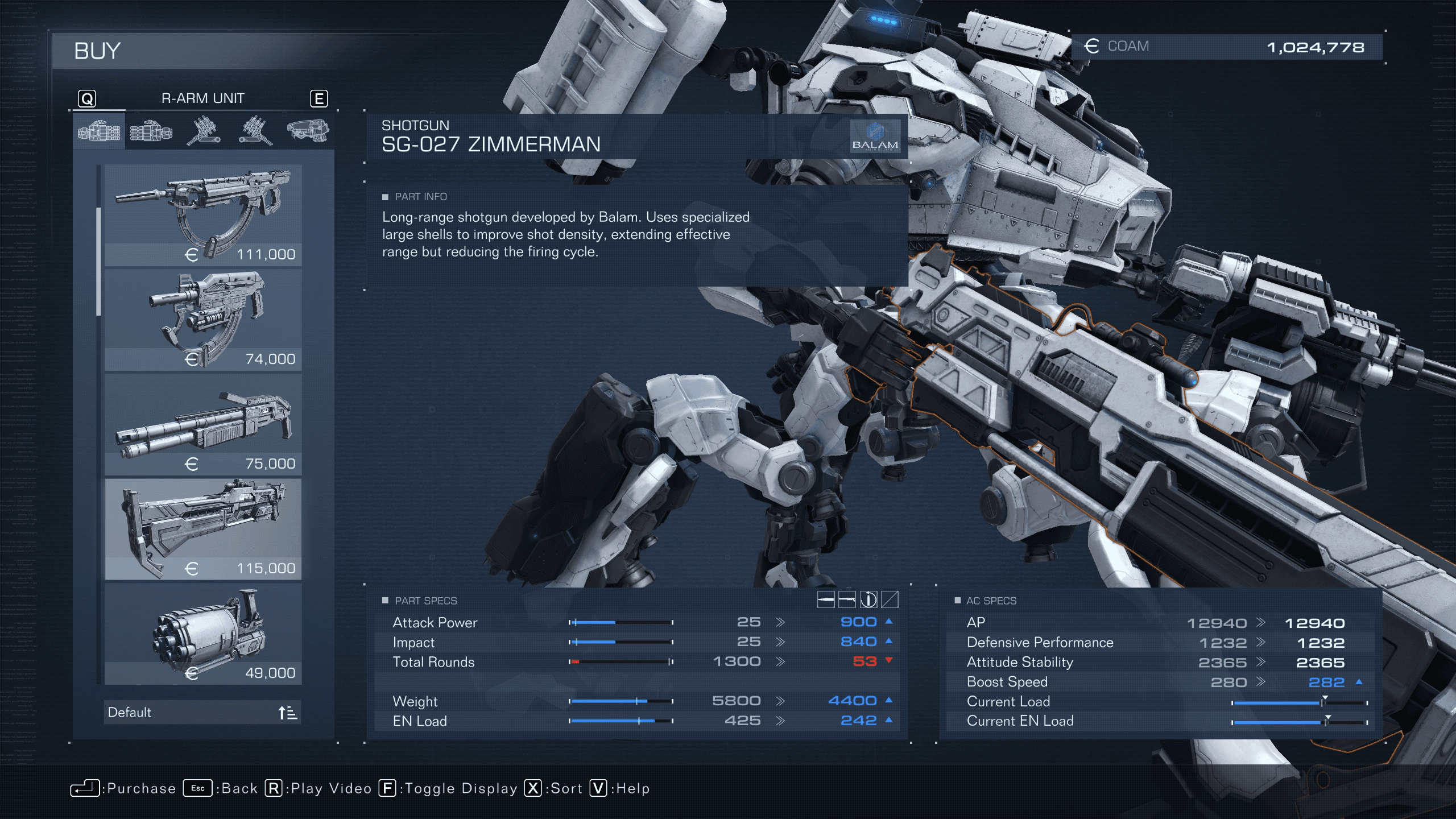
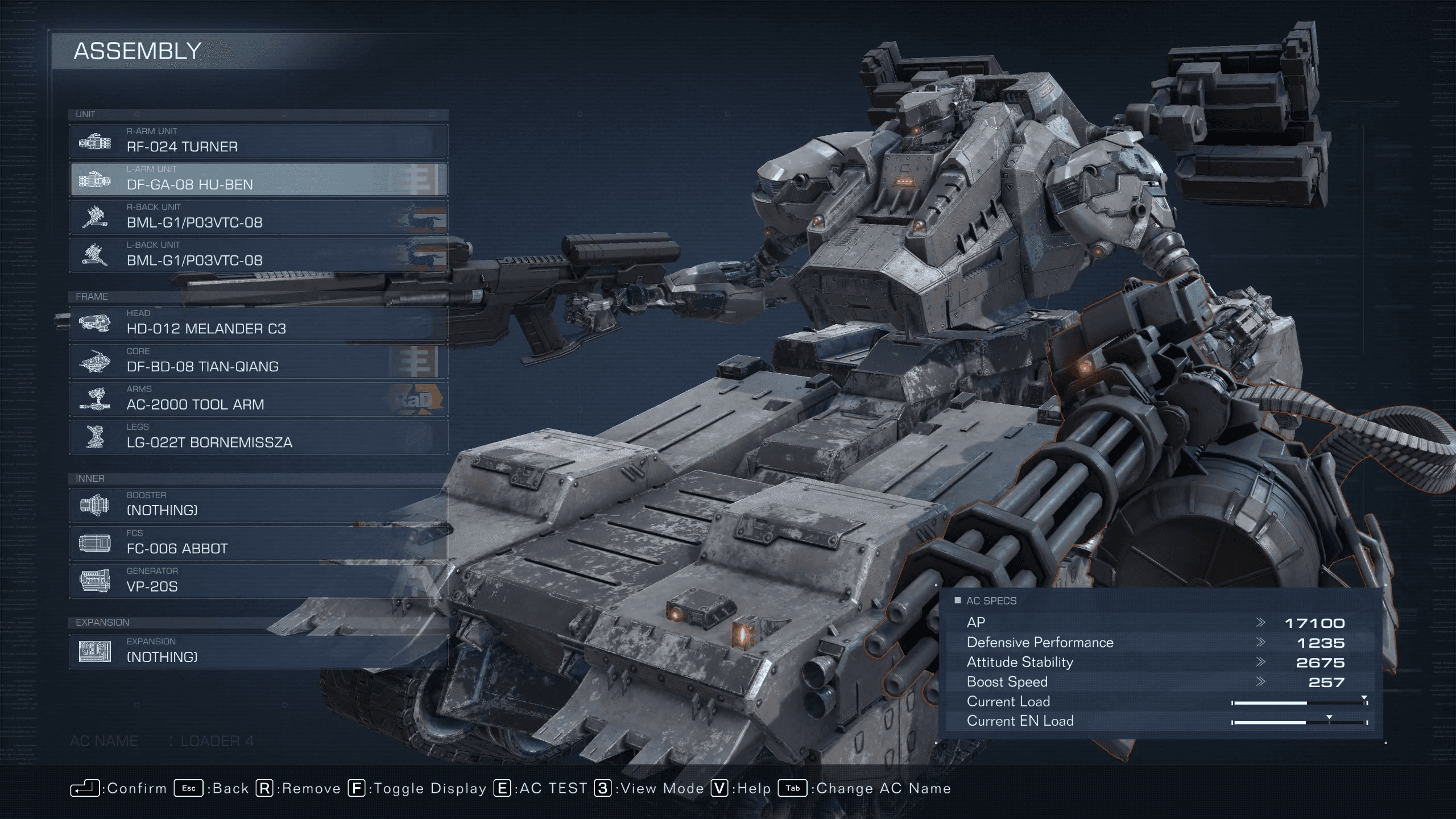
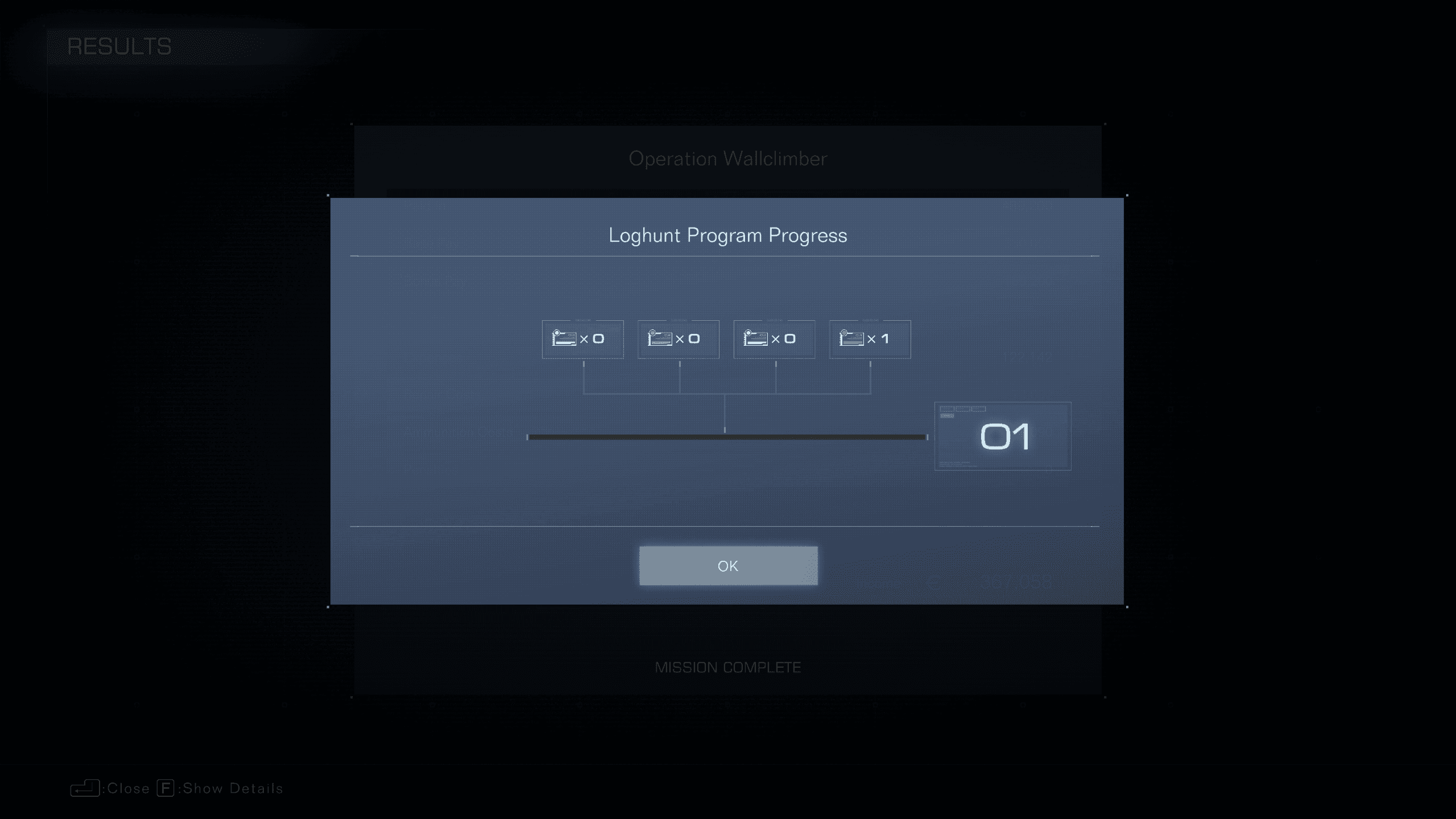
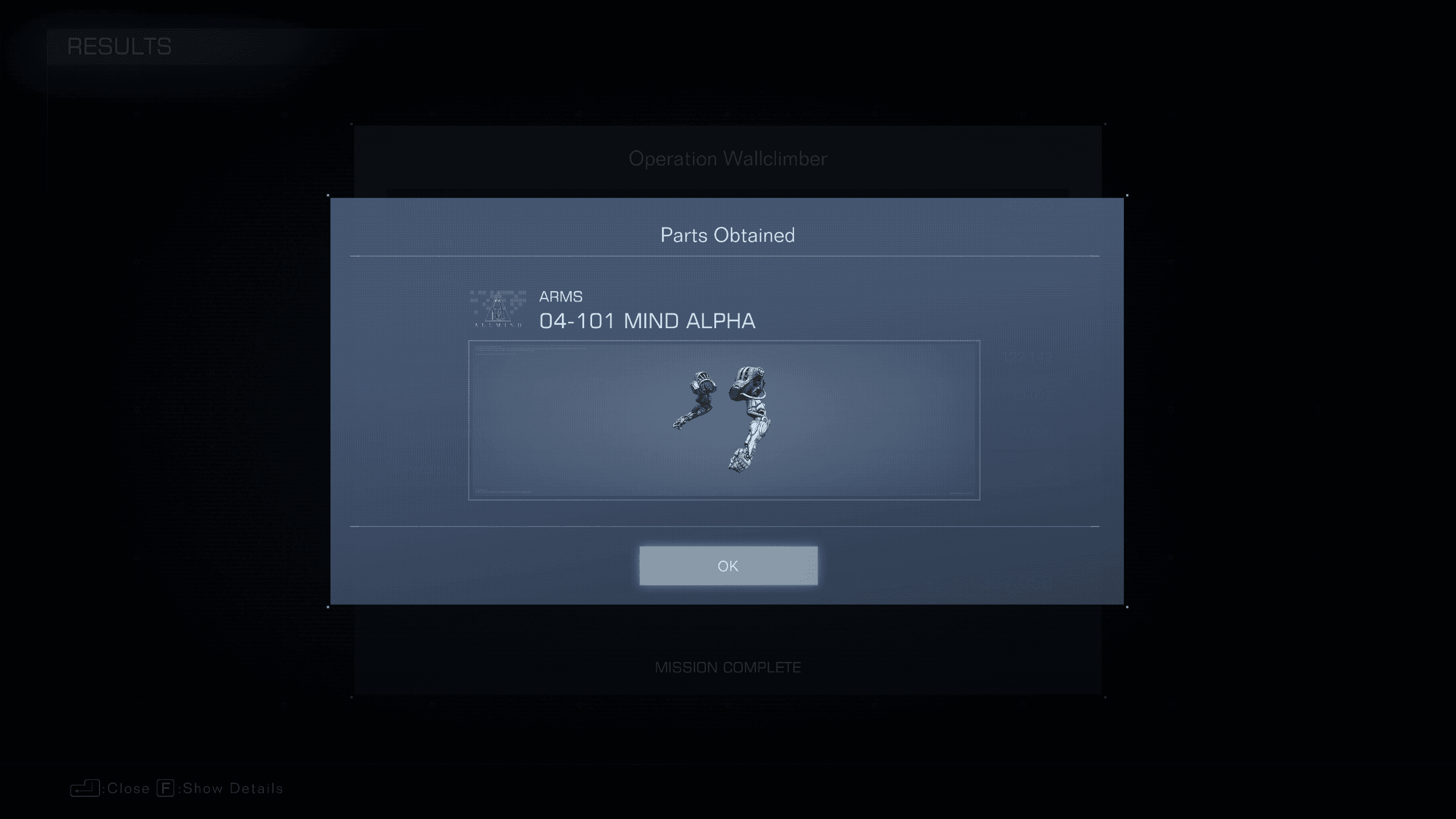
The second, and final pillar to mastering an Armored Core title is of course Combat and I have to say, it’s a perfect blend of AC4 and AC5. You want to be quick and agile, but also know how to take things at a reasonable pace to map out each level’s puzzle of enemies.
Encounter design does a great job of allowing you to approach most levels how you see fit. If your AC is all about getting up in the enemy’s face and blasting through the frontlines of an enemy force, you can do that. If you want to loop around the side and pick off targets with charged, longer range weapons, you can do that as well.
A lot of the time in the more chaotic missions, you really feel pressured on multiple fronts, and a lot of these encounters can get quite hairy at just a simple misstep in your combat execution, leaving you trying to reach the next checkpoint with no repair kits and a sliver of health. These moments were genuinely exciting.
Still, your AC is meant to be an oppressive force that strikes fear in the hearts of your enemies when you show up. Most of the enemies you’ll come across, especially early on, are pure cannon fodder and go down with just a few well placed shots as you rocket by them. As you progress further and further, elites will begin being sprinkled in the form of Heavy Muscle Tracers or MTs, Light Cavalry (LCs), and even Heavy Cavalry (HCs), with bosses being the penultimate combat experiences.
Eventually, missions begin to feature much more of these elite enemies as your AC becomes better equipped and more lethal, with those basic enemies becoming more of a nuisance and a way to rack up some extra credits in each mission.
Finally, bosses are also quite literally progression, skill, and build checks that I bet will stop much of the new and casual audience dead in their tracks, almost like hitting a wall. I mentioned it earlier, but it’s still just as true.
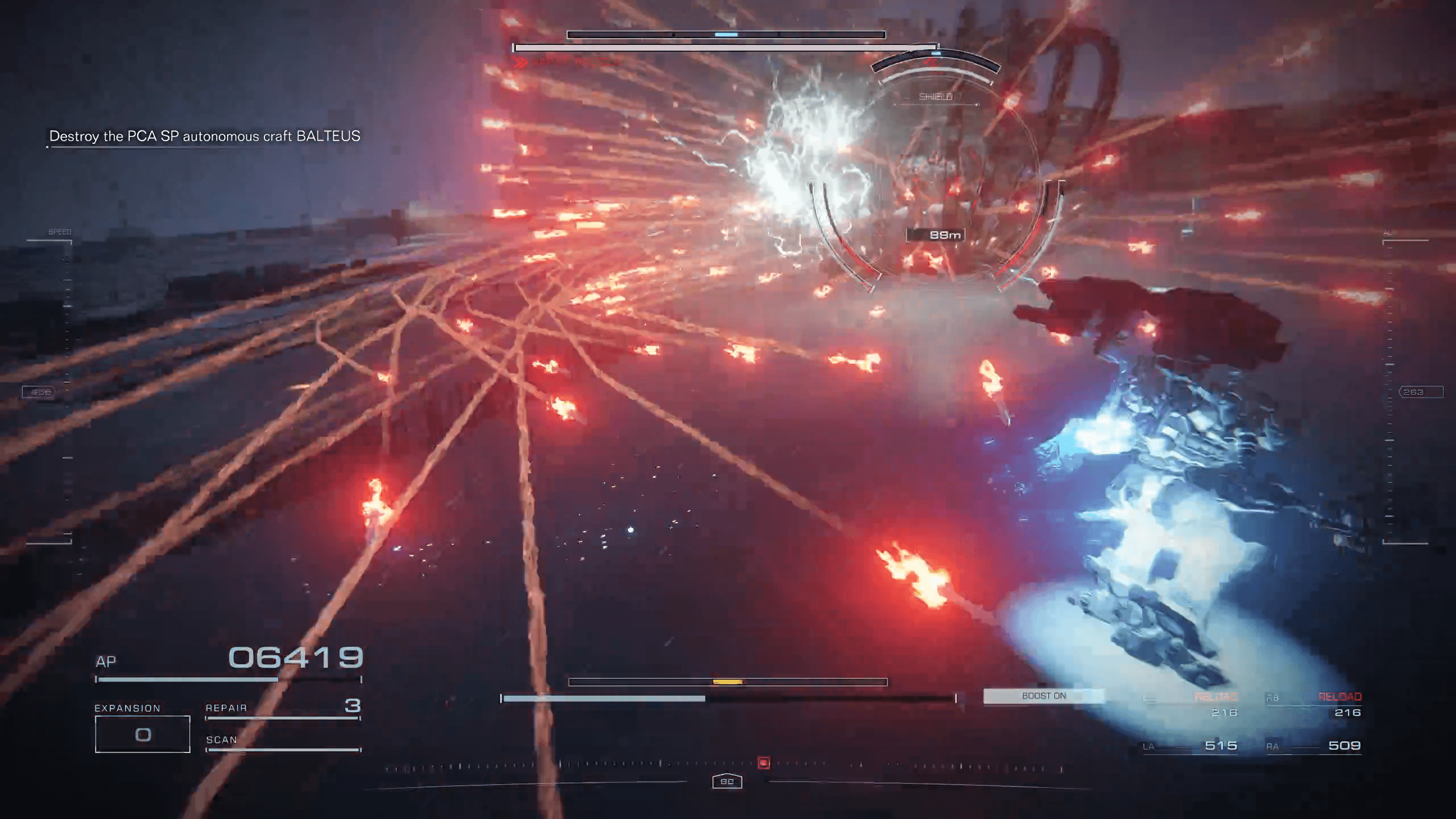

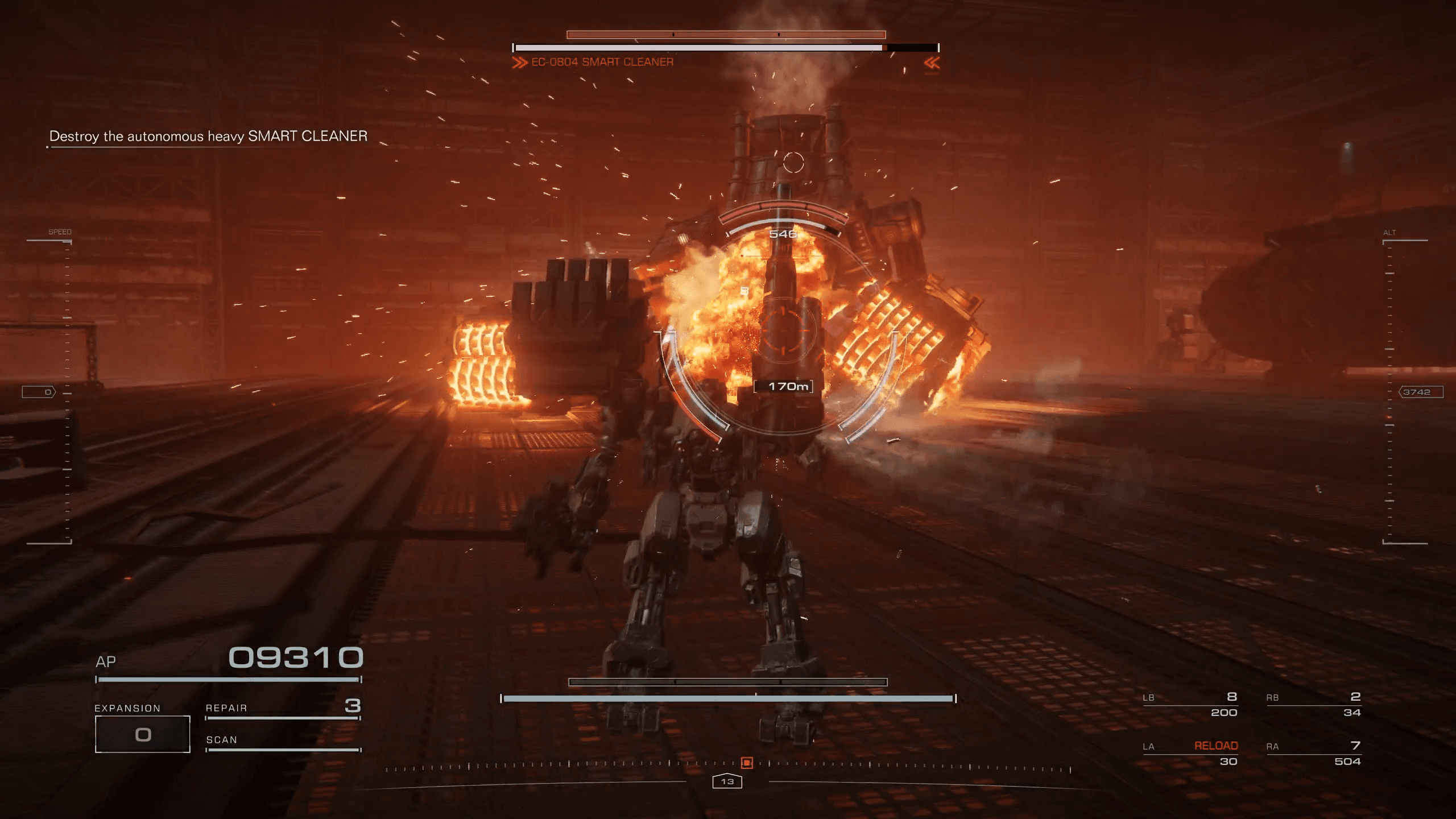
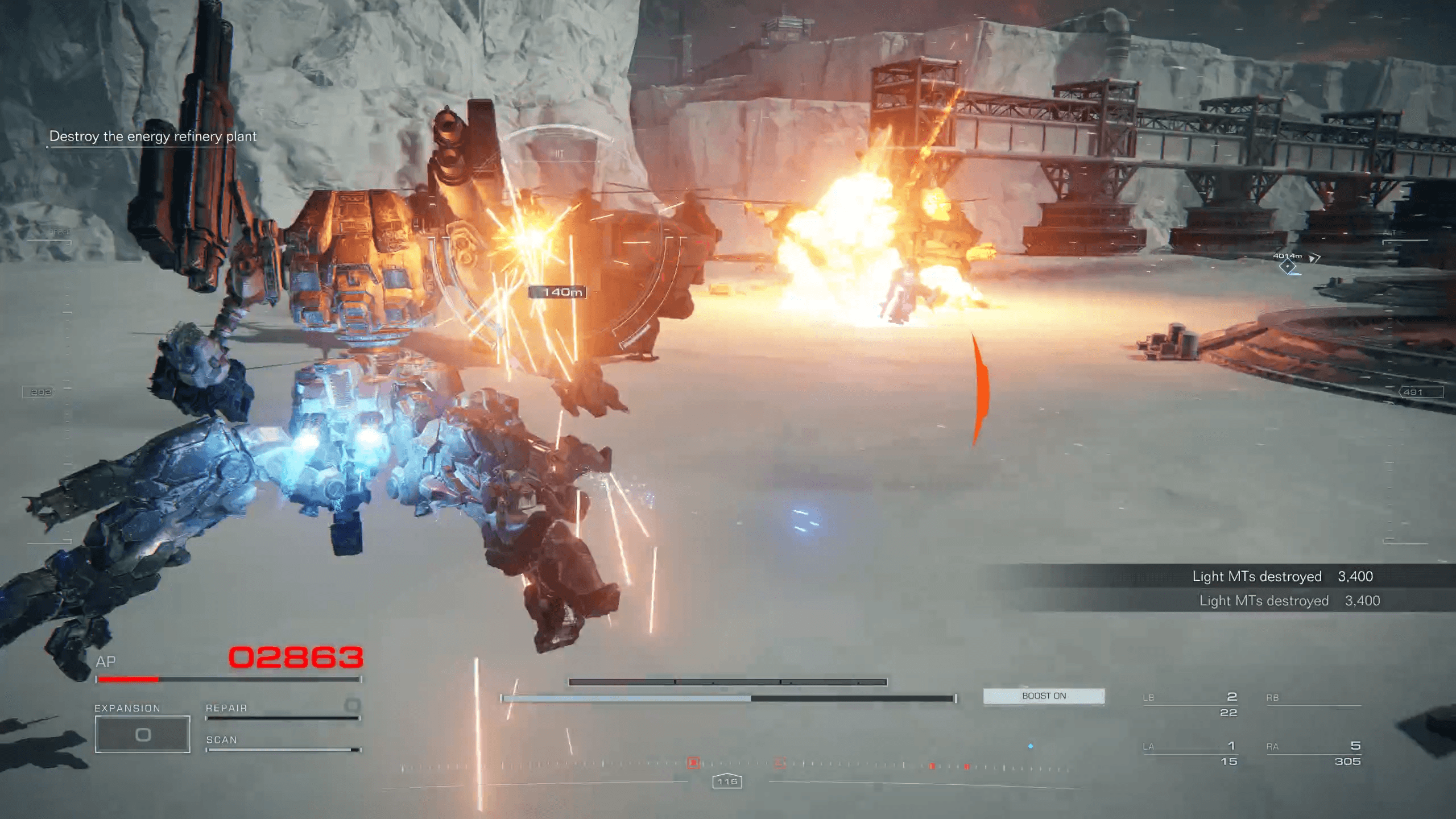
These bosses are excellently designed, and while a mechanic might seem overpowered or unfair, going back, adjusting your build, sometimes drastically, will see you re engaging these fights in much more efficient ways. Using dedicated energy weapons to remove energy shields quickly, explosives to rack up an enemy’s stagger bar to get in direct hits quicker, or using faster firing weapons to eliminate a particularly fast moving target all contribute to your success in these fights. There is no one build that will let you plow through everything, at least during your progression, so making sure you are creating different builds and utilizing that loadout system we talked about for different playstyles and encounters is vital.
Final Verdict
For Armored Core fans, mech enthusiasts, and maybe even a few fans of the action combat genre, I can see this game making it onto your game of the year list. It’s a fast-paced thrill that will keep you hooked, frustrate you to no end, and push your limits to the test, and if you’re like me, you love that. While famous for their Souls game FromSoft absolutely nailed their return to Armored Core VI and after over a decade of waiting this is just the re-entry into the mainstream the series needed.






